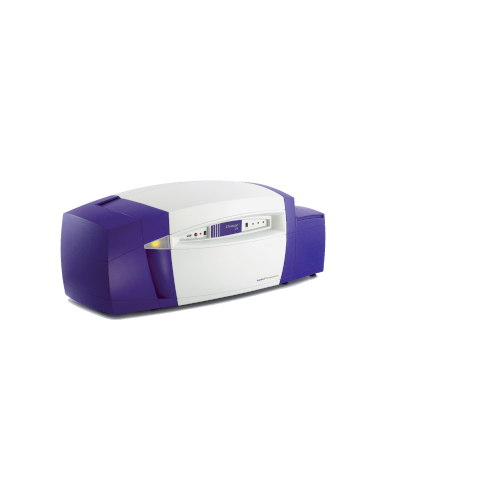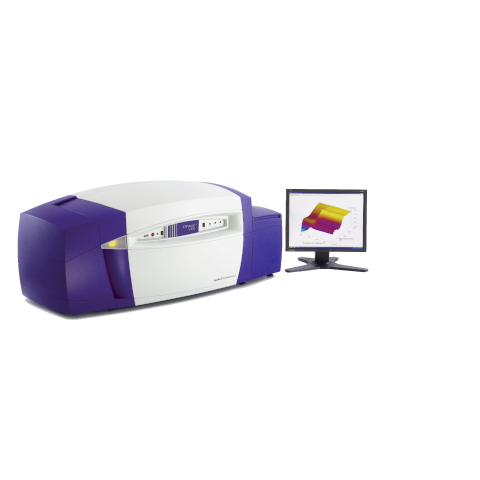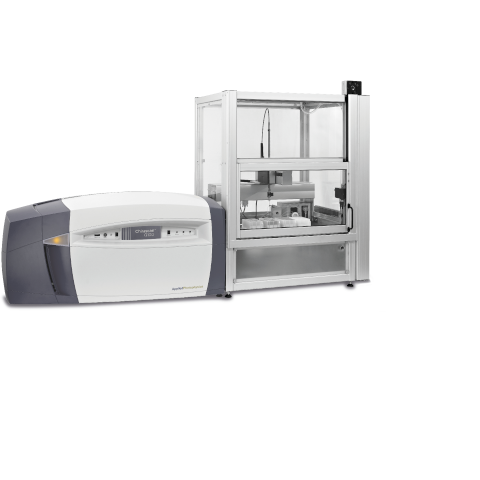Our Circular Dichroism Range
How low can we go?
Answering: What is the shortest wavelength that can be reached in CD measurements?
Aqueous Samples
Water is the limiting factor
Most often, CD spectroscopy is being used for aqueous samples, i.e., liquid samples that contain water as solvent. In fact, water absorbs light strongly in the vacuum ultraviolet (VUV) region (i.e., between 100 nm and 200 nm), and this is the main limitation to the accessible wavelength range that anyone measuring CD for aqueous samples is faced with—independent of what CD instrument they are using.
If we deliberately try to go to as low a wavelength as possible, we can take some unconventional measures:
- Very short path length. Demountable cells offer optical path lengths as low as 0.01 mm. This minimises the amount of solvent the beam must pass through.
- Extensive nitrogen purging. Before commencing measurements, nitrogen purging should be continuously maintained for a good while until oxygen (which also absorbs at low wavelengths) is completely removed from the system. An increased nitrogen flow rate can further ensure the absence of even minor traces of oxygen in the system.
- High bandwidth. The larger the bandwidth, the larger the light throughput. Note that towards lower wavelengths, the maximum available bandwidth decreases due to the wavelength dependence of dispersion by the monochromator prisms.
- Heavy water. Instead of light water, heavy water (i.e., deuterium oxide, D2O) can be used as solvent, which has a lower absorbance.
- No buffer, excipients, or other compounds. Anything in addition to the solvent will contribute to total absorbance and thus increase the lower wavelength limit.
Putting it to the Test
Getting real data
The strategy above was followed on a Chirascan V100 to illustrate what can be expected under such conditions.
Have a look at the CD spectrum (left) of D2O (blue) below: Over most of the wavelength region, we get a nice baseline that is more or less flat. However, below ~170 nm, the data gets very noisy!
By looking at the detector voltage (high tension, HT), we can see why (right)—as the absorbance increases, so does the HT: below 170 nm, the HT rises steeply, and at ~166 nm, it reaches 1000 V, which is the upper limit of the detector's dynamic range. Nothing can be done here.

If we compare to the HT spectrum for myoglobin in D2O (purple), we can see that it looks pretty similar. The protein does not reduce the light throughput a lot, the water is what really limits our measurement. The HT reaches ~700 V at 170 nm, and a higher voltage than this should generally be avoided.
There you have it—170 nm is the lower wavelength limit for benchtop CD instruments, and is only achievable with experimental conditions that are not really feasible for every-day work.
Going all the Way
Extreme measures for even shorter wavelengths
In fact, CD data can be obtained for even shorter wavelengths by taking some more extreme measures.
One idea is making use of a light source that is more powerful than any benchtop CD system could ever provide: a particle accelerator. This is put into practice by beamlines that provide high-flux electromagnetic radiation for Synchrotron Radiation Circular Dichroism (SRCD) spectroscopy. However, even with SRCD, water is a major limiting factor and CD measurements are usually limited to above ~170 nm still.
So, why don't we get rid of the water then? Under certain circumstances, this is actually possible, and has been demonstrated, e.g., for horse myoglobin. If the protein is prepared as a dry film, data to as low as 130 nm can be obtained with SRCD, revealing additional spectral features corresponding to electronic transitions that would otherwise not be detectable.
For more in-depth information about the above and a comprehensive overview on SRCD, see: Wallace, B. A. (2009). Quarterly Reviews of Biophysics, 42(4), 317–370.
Being Pragmatic
A reality check
In the end, however, the question shouldn't really be "How low can we go?" but "How low must we go?". That is, are the measures you take justified by your scientific intents and purposes?
For example, ask yourself the following questions:
- Do I know of electronic transitions below 170 nm that are essential for understanding my molecule of interest?
- Is my molecule of interest stable in a low hydration state, i.e., does it retain its integrity when it is virtually dried?
- Can I ensure that my molecule of interest is not photolabile, i.e., susceptible to exposure to intense UV radiation?
- Am I satisfied with a CD system that is accessible neither locally, frequently, nor immediately?
If your answer to all the questions above is "yes", then making use of SRCD for obtaining CD data at particularly low wavelengths is an avenue to consider. If not, then SRCD is probably not for you.
Particularly, carrying out SRCD measurements usually requires an application for beam time weeks or months in advance, it may require travelling over significant distances (depending on where your closest SRCD beam line is located), and beamline access is typically infrequent because it is shared with other users as well as the beamline's owners. Therefore, time and effort required for SRCD measurements may not fit into the measuring regime you are used to.
Likewise, trying to exhaust all possibilities for obtaining very low wavelength data with your benchtop CD instrument comes with some implications you should be aware of:
- Short path length cells require a higher sample concentration for a reasonable signal (typically several mg/mL of protein).
- The path lengths of demountable cells are less consistent than those of single-piece cuvettes.
- Deuterated water is significantly more expensive than normal water.
- Most biomacromolecules won't be happy in pure water and require at least a simple buffer for maintaining a stable pH.
If you can cope with all the caveats above, then an attempt to obtain CD data down to 170 nm with your benchtop CD instrument can prove successful—otherwise, 180 nm is typically a reasonable limit for routine measurements.
Specifications vs Reality
The low wavelength limit in technical specifications
"But wait, you specify the wavelength range of your CD instrument to start at 163 nm!", I hear you say. Indeed, we do—as do other manufacturers of CD instruments.
This number is based on the lamp output and on mechanical constraints of the monochromator and basically reflects how far the stepper motors can be moved that turn the monochromator prisms. This determines, ultimately, what the lowest wavelength of the incident light will be that the system can provide.
However, given the limitations imposed by water, this number is virtually meaningless for practical usage of the system. What's important is that this number is below of what is possible by all practical means.
As with other technical specifications, comparisons of different instruments against each other should be based on sensible, applicable requirements rather than numbers that lack relation to real-life situations. Unfortunately, a technical specification sheet is not designed to include comprehensive and intricate considerations such as those above. Fortunately though, there are avid users such as yourself who take the time to learn and understand them!
Related:
circular dichroism FAQs



